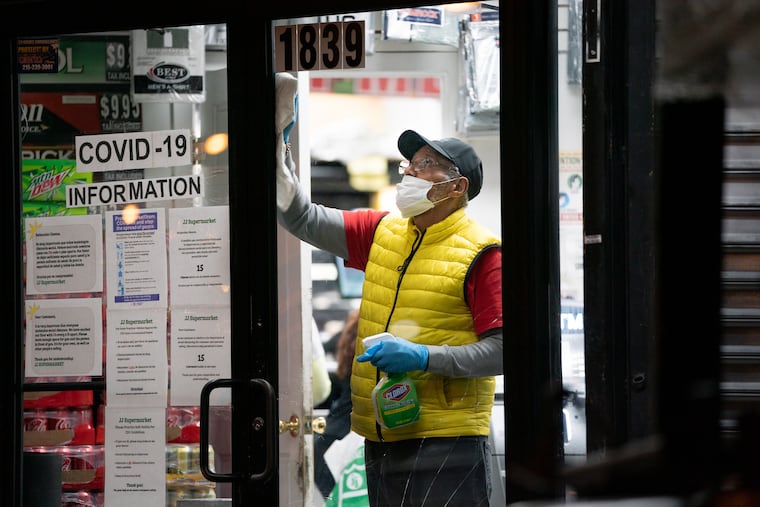How to clean and disinfect your home or business to protect against the coronavirus, according to the EPA
Not sure how to go about disinfecting your home or business to kill the coronavirus? The EPA has just released a guide.

Not sure how to clean properly and safely now? As the country makes plans to reopen, the U.S. Environmental Protection Agency has released a guide to help businesses, schools, and homeowners disinfect to protect against the coronavirus.
The federal agency says the coronavirus, which causes COVID-19, can almost assuredly be killed with the right methods and products. Much of the guide has already been circulated in news accounts or other government guidelines. But the new guide puts all the information in one place.
Here’s a quick breakdown, but consult the full nine-page guide when developing your own plan of attack because certain businesses and health-care facilities have specific guidelines.
General cleaning
Good old soap and water are the first step to cleaning surfaces around the house. Normal soap inactivates the virus and greatly reduces the risk of exposure.
Next, use disinfectants if warranted. The EPA has compiled a list of disinfectants, including sprays, concentrates, and wipes that have proven effective against viruses. Look for products with active ingredients such as quaternary ammonia, ethanol, hydrogen peroxide, and sodium hypochlorite (bleach)
If you don’t have ready-made disinfectants, you can use common household chemicals — if you can find them. For example, mix one-third cup of bleach with one gallon of water, or use a 70% alcohol solution. It’s important not to mix bleach with other cleaning products because that can cause harmful fumes.
Don’t stockpile disinfectants because that can lead to shortages for others.
» READ MORE: How to make disinfecting wipes at home
Reduce your exposure
Continue to practice social distancing, wear face coverings, and wash your hands frequently with soap and water or, if they are not available, use a 60% alcohol-based hand sanitizer.
Remember that the coronavirus dies within hours or days on surfaces.
Warmer temperatures and exposure to sunlight will reduce the time the virus survives on surfaces and objects.
» READ MORE: How to wash your groceries right now
Develop a plan
If you oversee staff, consider the safety of cleaning crews at risk of being exposed to the virus, as well as toxic chemicals. Give them adequate PPE and instruct them on proper disinfecting procedures.
Evaluate your workplace or home by taking stock of what type of materials make up most of the surfaces. Many surfaces, or objects, only need routine cleaning with soap and water.
If possible, remove items that are frequently touched or handled. For example, area rugs and seating could be removed and stored by a business planning to reopen, but no longer seating customers.
Consider how often certain surfaces get touched. They might need only an initial cleaning, but not additional disinfecting.
Frequently touched surfaces should be disinfected, especially after a business reopens, including tables, doorknobs, light switches, countertops, handles, desks, phones, keyboards, toilets, faucets and sinks, gas pump handles, touch screens, and ATM machines.
Bars and restaurants may have additional requirements.
If a workplace, school, or business has been unoccupied for seven days or more it will need only routine cleaning because the virus has not been shown to survive on surfaces longer than that.
Children
Don’t apply disinfectants to items used or touched by children. Many disinfectants are toxic if swallowed.
The CDC has separate guidance for child-care facilities. In your home, clean toys with soap and water.
Outdoors
Outdoor areas generally require only routine cleaning, not disinfection.
Spraying disinfectant on public sidewalks and parks has not been proven to reduce the risk of COVID-19. But they can be used safely on hard surfaces frequently touched by multiple people in a commercial setting.
There is no evidence that the coronavirus spreads directly to humans from water in pools or hot tubs, and chlorine and bromine kills it.
It is not necessary to clean ventilation systems, other than routine maintenance.